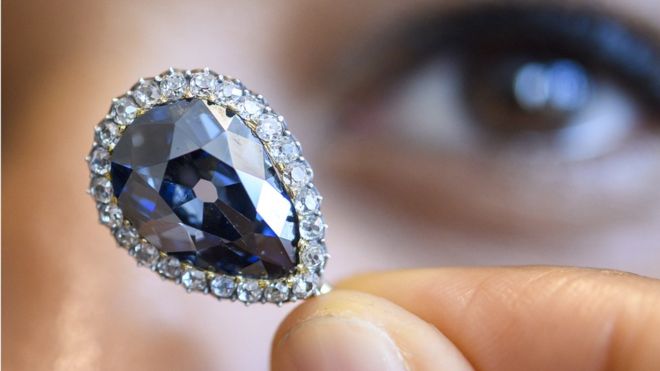.jpg)
Blue Diamonds – A Drop From An Ancient Ocean?
29.08.18
Since first discovery, Type IIb boron containing blue diamonds have been some what a puzzle for geologists, gemologists and scientists alike. There is no specific origin of blue diamonds, so when unearthed they quickly become the hottest news on every gem lovers’ lips.

The Farnese Blue Diamond sold at auction for £5million in May 2018.
New research published in the journal Nature by a GIA Research scientist suggests that these precious stones are “superdeep” gems, formed much deeper in the Earth than many other gem quality diamonds. The element boron is strongly concentrated on the surface of the earth, yet there is an extremely low concentration in the mantle, the birth place of diamonds. With their lack of mineral inclusions this is what makes researching blue diamonds so mystifying. The article notes that the boron atoms contained in blue diamonds may have originated from ancient oceans. But how did an ancient ocean end up in the lower mantle?
Studies carried out by GIA on inclusions within 46 type IIb blue diamonds have presented us with the information to attain the host rock and the depth at which crystallisation occurred. The mineral assemblage of the inclusions are only found together in a niche environment, at extreme pressures, which can only be found very deep within the earth. Most diamonds are formed around 150-200km near the base of old and thick continental crust, comparatively, boron containing blue diamonds have a depth of 410-600km (the transition zone) stretching to >660km (the lower mantle).
Plate tectonics are the driving forces that create mountains, volcanos and the deepest trenches on Earth, they are Mother Nature’s very own recycling system. Convergent and divergent plates move on top of mantle convection currents, fuelled by the Earth’s core. With the conclusion of the great depths blue diamond inclusions are formed, the results also show that they were formed in the presence of oceanic crust. Knowing that there’s a high concentration of boron on the Earth’s surface and a relatively low concentration within the Earth’s mantle the boron must have been brought into the mantle by oceanic crust subduction zones.
.jpg)
Image courtesy of popsci.com
The infiltration of sea water to the ocean floor causes a chemical reaction that deposits boron into the oceanic lithosphere, this is then transported with water bearing minerals down into the lower mantle. A boron rich fluid released by the break down of the hydrous minerals under the extreme temperatures and pressures provokes the formation of diamond growth. This research has provided priceless information about the geochemistry of the mantle and plate tectonic processes.
In 2016, research was published that relatively large and pure diamonds were of “superdeep” origin, coupled with this new research, we now know many of the worlds most expensive and brilliant diamonds are super deep diamonds, making them invaluable windows into the unchartered territory of the Earth’s mantle.
Laura @ IGR




